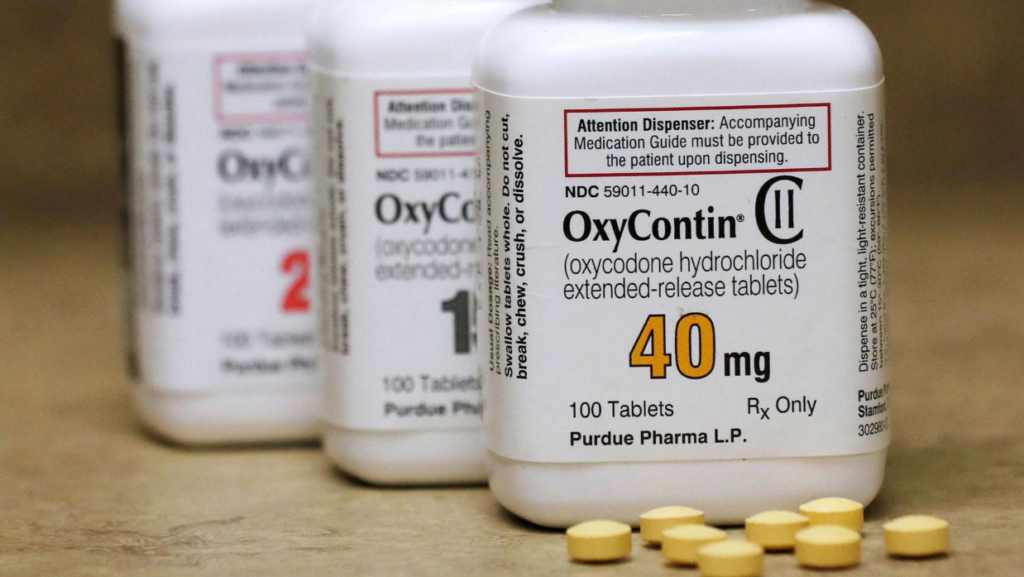Once hailed as a “miracle drug” for its 12-hour pain relief, OxyContin quickly spread across America, changing the lives of millions—often in ways they never expected.

The Rise and Fall of OxyContin
Introduced in 1996, OxyContin became the most widely used painkiller in the U.S. Marketed by Purdue Pharma as a “safe” and effective treatment for chronic pain, it was designed to release pain relief gradually, making it supposedly less addictive than traditional opioids. However, this claim turned out to be dangerously misleading.

With its time-release formula, OxyContin was intended to provide long-lasting relief for cancer patients and those suffering from severe chronic pain. Purdue Pharma aggressively promoted it as a low-risk opioid, assuring doctors and patients that it carried minimal chances of addiction. Yet, as the drug gained widespread use, an epidemic of abuse and dependency took hold.
A Public Health Catastrophe
The Centers for Disease Control and Prevention (CDC) reports that from 1999 to 2017, over 7 million Americans misused OxyContin. Many started with legal prescriptions, but the drug’s highly addictive nature led them to take higher doses, fueling an opioid dependency crisis that extended to illicit markets.

Research found that 25% of OxyContin users developed dependence, a significantly higher rate than Purdue’s marketing suggested. As dependency grew, people sought stronger alternatives—many turning to heroin and fentanyl when prescriptions ran out.
By 2017, opioid overdoses claimed over 50,000 lives annually in the U.S., with OxyContin playing a major role. Since its introduction, the drug has contributed to over 250,000 overdose deaths, with the crisis worsening each year.
The Economic and Social Toll
The financial burden of opioid addiction is staggering. According to the CDC, opioid abuse costs the U.S. economy $500 billion annually, including healthcare expenses, lost productivity, legal costs, and social services. Families have been torn apart, crime rates have risen, and entire communities have suffered as a result of Purdue Pharma’s deception.
Purdue Pharma’s Collapse and Legal Fallout
Purdue Pharma’s success was driven by a massive marketing machine. From 1996 to 2000, OxyContin sales skyrocketed from $48 million to $1.1 billion. By 2010, it was generating $3 billion annually, making it one of the best-selling painkillers in U.S. history. At its peak, the Sackler family’s net worth exceeded $10 billion—wealth built on a drug that devastated millions.
Public outrage led to an avalanche of lawsuits. State governments, municipalities, and individuals sued Purdue Pharma and the Sackler family, accusing them of deliberately downplaying the risks of addiction. In 2019, Purdue declared bankruptcy as part of a multi-billion-dollar settlement. The Sacklers agreed to pay $6 billion to settle lawsuits but avoided personal liability.
In 2020, the U.S. Department of Justice announced that Purdue Pharma pleaded guilty to three felony charges related to its misleading marketing practices. However, critics argue that justice remains elusive, as the opioid crisis continues to ravage communities across the country.
The Lingering Impact
While Purdue Pharma has been dismantled, the opioid crisis is far from over. The rise of synthetic opioids like fentanyl has replaced OxyContin as the leading cause of overdose deaths. The U.S., which comprises just 5% of the world’s population, consumes 80% of its opioid supply—a stark reminder of the lasting impact of corporate greed and regulatory failures.
The story of OxyContin serves as a cautionary tale of how a single drug, marketed as safe, can spiral into a national tragedy—one that continues to claim lives every day.

Leave a Reply